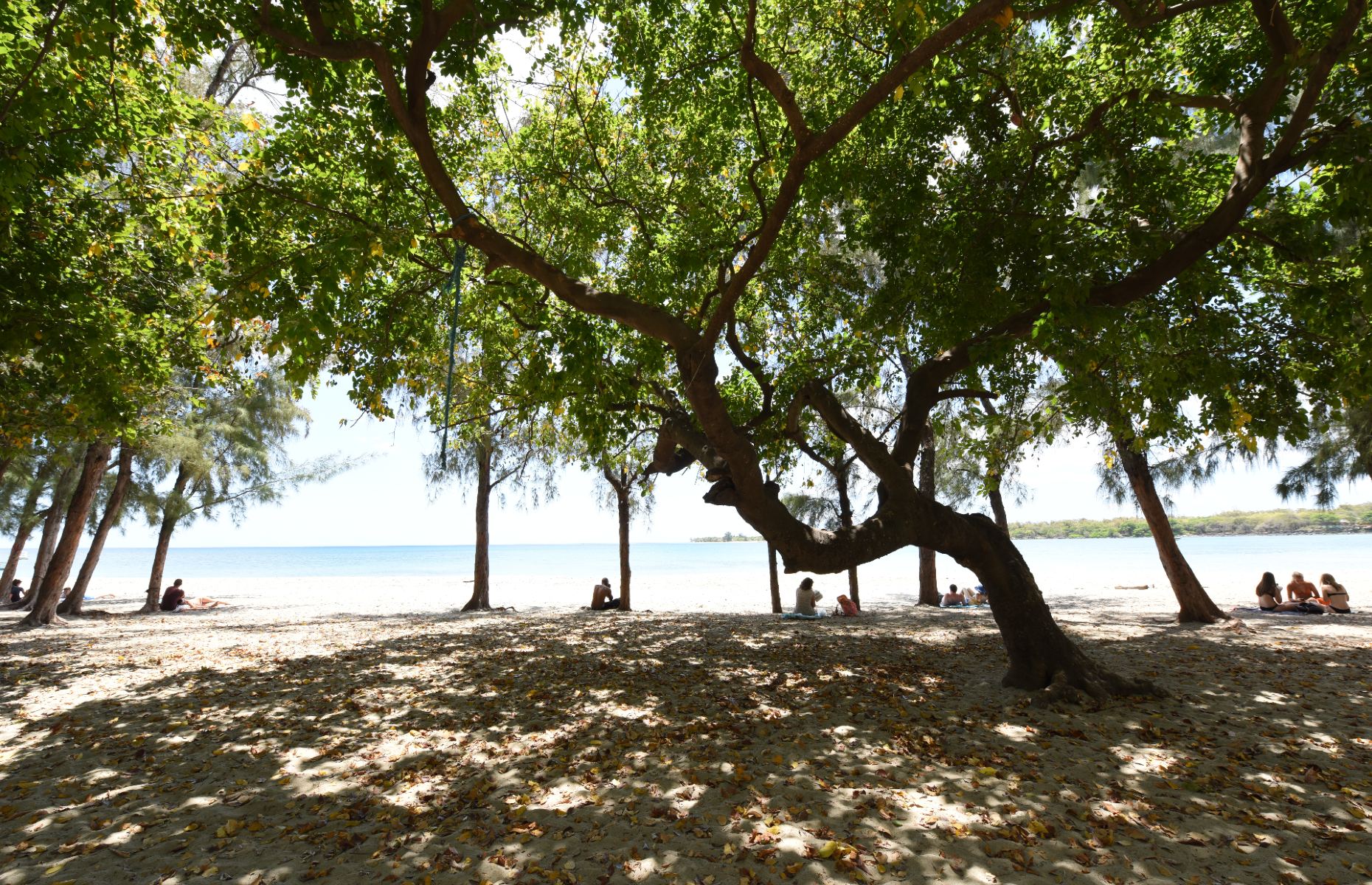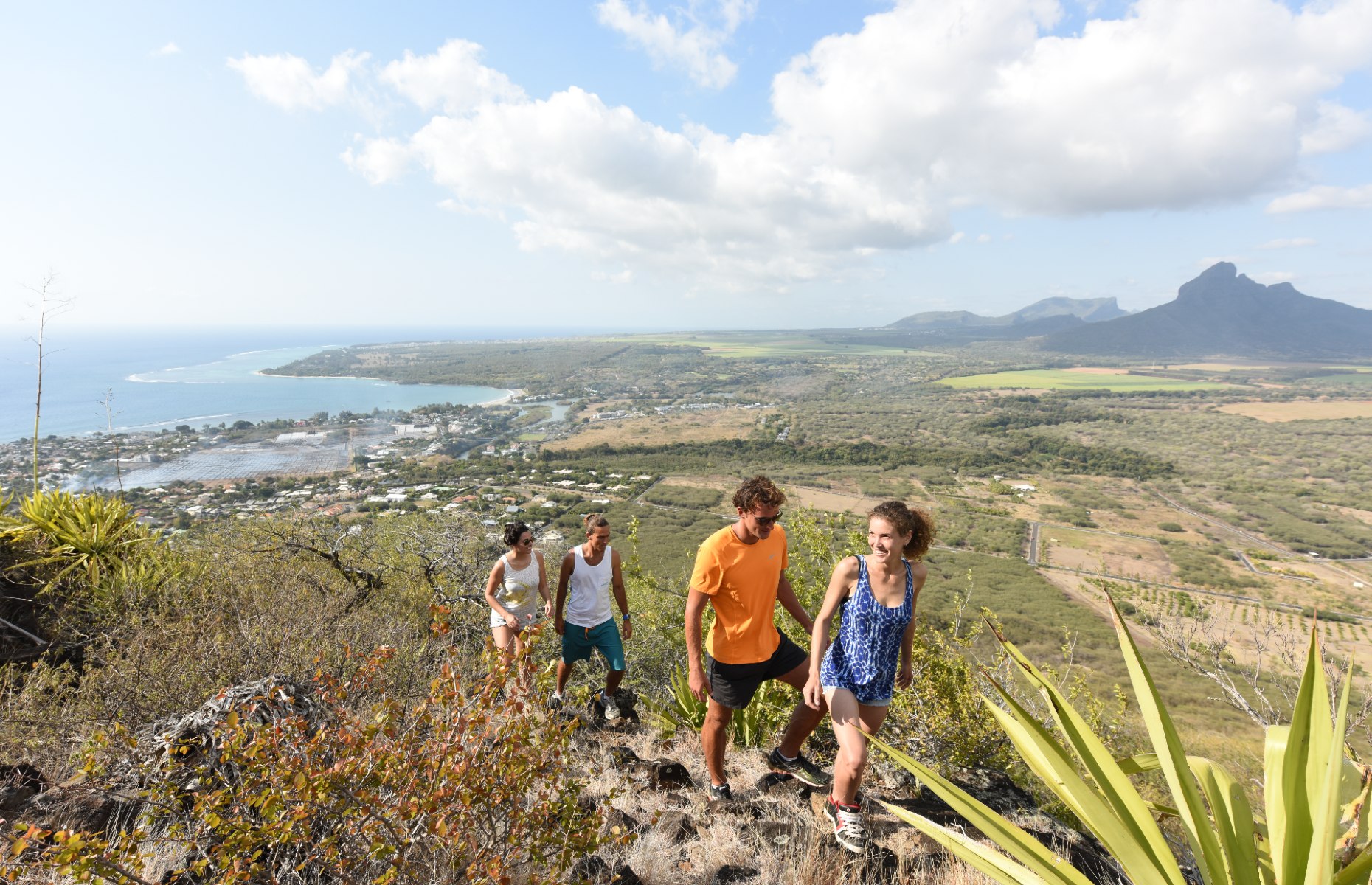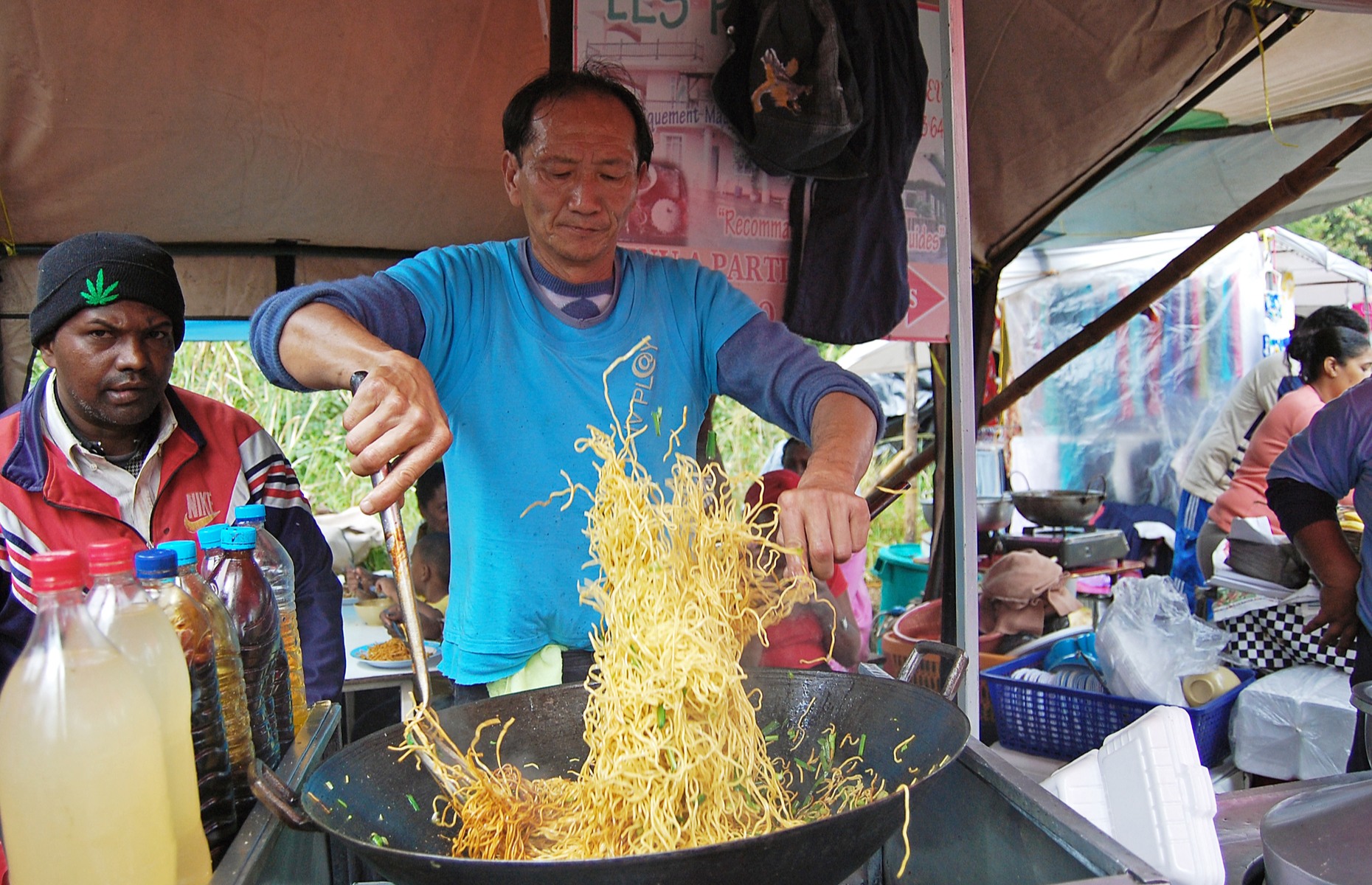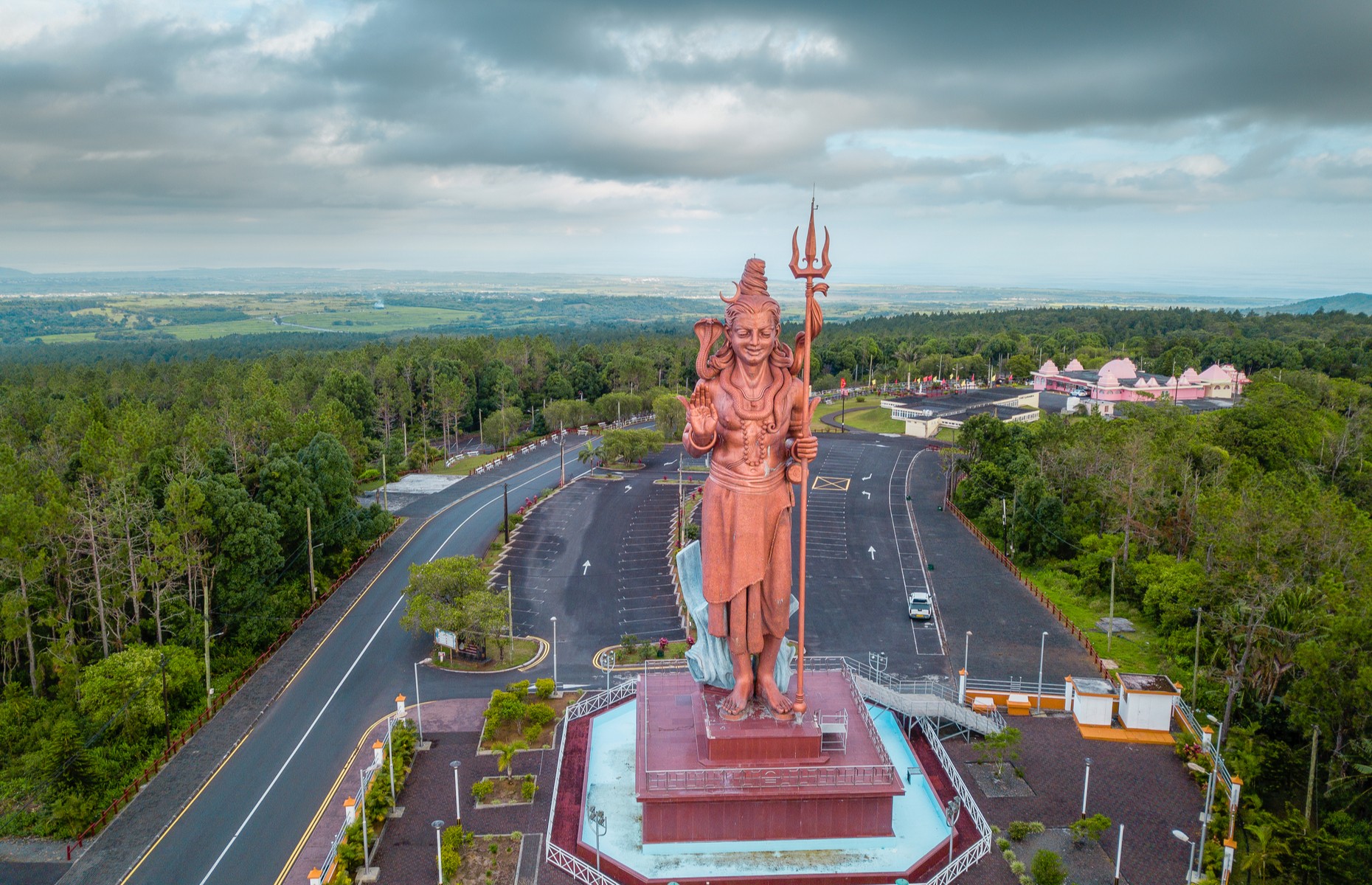Why Mauritius is more affordable than you think

Dreaming of an Indian Ocean escape but can’t justify the cost? Set your sights on Mauritius, a land of lapping lagoons, luscious landscapes and laid-back living that won’t break the bank, says Alice Barnes-Brown
“That’s it. I’m dead, and this is heaven”, I think while practising the corpse pose during a yoga class on Mauritius’ Le Tamarin beach. The high-pitched coo of tropical birds drowns out all other noise. To my left, the warm sun falls behind the sea. To my right, the pointed peak of Le Rempart is bathed in soft evening light. Above, flying foxes flap their spindly wings. At this point in yoga, you’re meant to close your eyes – but when in paradise, why would you want to?
Holidays in the Indian Ocean can feel financially out of reach. While it might not be the first idyllic island to cross your mind, that’s Mauritius’ selling point: its lower profile is reflected in lower prices.
I’m staying at the three-star Veranda Tamarin hotel, whose new Explorer activity programme gives guests more than four nights’ generous credits towards local experiences, including yoga on the sand, catamaran tours on turquoise lagoons and sunset hikes up the island’s most iconic mountain, Le Morne Brabant. Each adult guest gets a 2,800 Mauritian Rupee (nearly £50) credit towards activities, while kids get 1,400 rupees (nearly £25) each. Some of the activities on the programme cost even less than this, so you’ll likely have some balance left over for a discount on another adventure.
 Image courtesy of Veranda Resorts
Image courtesy of Veranda Resorts
5 purse-friendly activities to enjoy on Mauritius
Surfing
Tamarin Bay is a secluded spot, with a break in the coral reef just wide enough to allow surfer swells to make landfall. One of the Veranda’s Explorer Package activities is an hour-long surf lesson led by Cyril Thèvenau, the veteran, bucket-hat-wearing surfer dude who runs the school next door. After an hour of splashing around in the shallows, Cyril’s dedicated teaching typically pays off and learners are able to stand up long enough to catch a wave. In the UK and US, surf lessons can cost upwards of £50 (or $60) per hour, per person. In Mauritius, that sort of money will pay for a family of four to ride the waves, so it’s easy to get on board with the idea.
 Image courtesy of Veranda Resorts
Image courtesy of Veranda Resorts
Beach days
Mauritius’ most famous attraction is its stretching sands, which are all state-owned and open to the public. Family fun is to be found at Flic en Flac, a dreamy white coral beach shaded by wispy Australian she-oak trees. Snorkelling to meet the Finding Nemo stripy clownfish makes for a low-spend and entertaining beach day, as do BBQs and picnics – packed with a little pineapple-infused local rum to accompany the stellar sunsets over the Indian Ocean.
 Image courtesy of Veranda Resorts
Image courtesy of Veranda Resorts
Hiking
A strenuous hike up one of Mauritius’ many mountains is the perfect antidote to those sleepy beach days. Le Morne Brabant – the flat-topped, 556-metre promontory that graces most Mauritian postcards – can prove quite a challenging task for the rambler, but the vistas over the mother-of-pearl-like turquoise lagoon, rainforest and Black River Gorges National Park make it all worthwhile. If you’re lucky, you might spot the rare ‘earring tree’, a wild woody shrub with dangling pink flowers found exclusively on this mountain. Go with a reasonably priced local guide to show you the ropes.
 Image courtesy of Veranda Resorts
Image courtesy of Veranda Resorts
Eat around the island
Mouth-watering cheap food isn’t in short supply on Mauritius, whether you’re after a hearty meal in a local café, or street eats in Port Louis. Pick up a roti wrap filled with meat or vegetarian curry to keep you going. Queues of hungry Mauritians frequently form at Farata AKA Vinoda, a bright blue and red roti shack on Flic en Flac beach, but don’t worry about waiting long: the line dissipates quickly as hot curry wraps fly across the counter. It’s clear why Mauritian families make a beeline here: a spiced pumpkin and bean filled veggie delight costs just 20 rupees (35 pence).
 Image: Shutterstock/Ralu Cohn
Image: Shutterstock/Ralu Cohn
Grand Bassin/Ganga Talao
Pay a visit to Mauritius’ largest natural lake, known locally as Ganga Talao, for a low-cost, culturally enriching experience. The crater lake is sacred to the island’s Hindu population: legend has it that it was formed after god Shiva spat water from the Ganges over to Mauritius. As well as a smattering of colourful temples, each covered in flowers and offerings to Hindu deities, Ganga Talao is watched over by two 102-foot (33m) statues of Shiva and goddess Durga Mata. Every spring, thousands of Mauritian pilgrims flock to the spiritual site for the Maha Shivaratri festival, where offerings such as fresh fruit and vegetables, lights and incense sticks are left on the shores of the lake. If you’re here in late February or early March, it’s a sight not to be missed and won’t cost a penny.
 Image: Shutterstock/tb-photography
Image: Shutterstock/tb-photography
Alice was a guest of Veranda Resorts (for more information please visit veranda-resorts.com/en). Prices start from around £120 per room per night. Book before 31 August 2022 to get 40% off standard rates on stays up to 31 January 2023. Fly with Air Mauritius, with return flights London to Sir Seewoosagur Ramgoolam International from £481 return.
Comments
Be the first to comment
Do you want to comment on this article? You need to be signed in for this feature